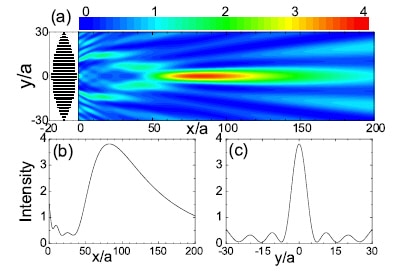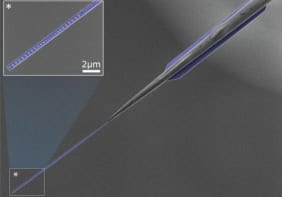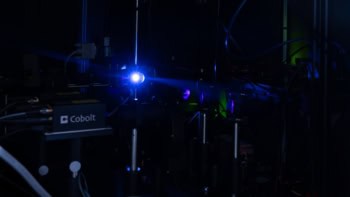Physicists have devised a new way to focus water waves that could prove useful for wave-energy applications. Based on computer simulations and various theoretical techniques, Xinhua Hu and Che Ting Chan of the Hong Kong University of Science and Technology have shown that a periodic array of cylinders should be able to refract waves in any depth of water (Phys. Rev. Lett. 95 154501).

Water waves can usually only be refracted in shallow water. However, Hu and Chan found that an array of cylinders fixed to the sea bed and extending above the surface of the water changed both the “effective” depth and gravitational constant of the water, and that this resulted in the waves being refracted. They showed, for instance, that the effective gravitational constant could be increased from its regular value of 9.8 metres per second per second to 16 metres per second per second.
The Hong Kong team also found that wave propagation was forbidden in some frequency ranges, which leads to water-wave band gaps that are analogous to those that exist for electrons in semiconductors, photons in photonic crystals, and phonons (or sound waves) in phononic crystals. Hu, who is now at Iowa State University in the US, and Chan showed that the refracted water waves obey Snell’s law, which means that many concepts from optics could be adapted for use with water waves.
“The phenomenon can be viewed as a mechanism to control and manipulate water waves,” says Chan. “For example, we can use the concept to design a ‘lens’ that focuses water energy to one point (figure 2). This is good for converting wave energy into other forms of energy, like electricity.”




